Witness - [13]
‘No point in you waiting,’ she told Shelley.
‘I don’t know.’
‘I’m fine. Honestly. The pain’s all gone.’
Shelley took some persuading but they both knew enough about hospitals to realize it could be a long time before Fiona was seen. ‘Can you do me a favour, take my car home?’
‘Of course, and let me know what they say.’
She had nothing to do. Nothing to read. She passed the time examining her fellow casualties, trying to work out what accident had befallen them. Some were easy: the schoolboy in his PE kit with a makeshift sling and the elderly woman with a grazed knee complaining to all and sundry about the kerbs. But others had hidden traumas.
The time inched by. Patients were called through to the examination bays and others took their places. They would have brought Danny here. Through the other double doors straight into the resuscitation suite. And then to the mortuary.
‘Fiona Geary.’
She stood and followed the nurse to a bay. ‘You’ll know the drill,’ the woman joked. A reference to Fiona’s uniform. ‘You at St Mary’s?’ The maternity hospital was nearby.
‘Yes, on the community.’ Some of the midwives worked all their shifts in the hospital. The community midwives made the home visits before and after birth, carried out home deliveries, worked with women on the domino scheme, where they only went into hospital for the actual birth. Fiona preferred work in the community. There was more freedom and greater responsibility. Less intervention. The consultants held less sway.
The nurse handed Fiona the thermometer, which she tucked under her armpit. She tested her blood pressure. Both readings were a little high. ‘Any symptoms now?’
Fiona shook her head. ‘Just a bit tired, a bit dizzy.’
‘Any breathing trouble?’
‘No.’
The nurse checked through her form. No history of asthma, allergies, no pre-existing medical conditions. No regular prescriptions. Any family history of heart problems? Yes, her father. Fiona felt the prick of irritation. It was already all down there in black and white, she’d filled the form in today, did they think she’d developed diabetes or epilepsy in the meantime? She knew she was being unreasonable. She double-checked the same details with her own patients. She answered all the questions as reasonably as possible. The nurse left her for a few minutes and then a doctor appeared. The doctor looked at the form and listened to her heartbeat. Then she was sent back to reception to wait.
Another half-hour passed. Fiona knew that a lot could be done with heart disease. She was a little overweight but nothing excessive. They might put her on statins to lower her cholesterol, or do a bypass. A nurse brought Fiona a form and asked her to take it to Cardiology. The hospital was a maze: annexes and prefabs had been bolted on to the old Victorian buildings, sprawling in all directions and now connected up to a spanking new extension. Complicated colour-coded signs were there for navigation.
She handed the form in to the receptionist at Cardiology and took a seat. There was a water cooler there and she was thankful to drink a cup, to clear the stale taste from her mouth.
The ECG took ten minutes. The cardio guy attached the stickers to her arms, legs and chest, and she lay down on the curtained bed while the machine took its measurements.
There was nothing wrong, no arrhythmia or palpitations, no indication of any heart trauma. No echo of myocardial infarction. The cardiologist, giving her the results, asked her to describe again the symptoms she’d had. As she did, she felt her mouth get dry and her pulse speed up, a sense of dread creeping up her spine.
‘The tingling,’ he asked, ‘where was that?’
‘My feet and my hands.’
‘Any cramping in the arms?’
‘No.’
He nodded, pleased with her answers. ‘I think the good news is that there’s no sign of a heart attack. But there is an explanation that accounts for all the symptoms you describe, and that’s a panic attack.’
Fiona stared at him.
‘Have you been under any particular stress recently?’
‘Yes,’ she whispered. Felt her tongue stick to the roof of her mouth.
Another nod. ‘Your GP will be able to help,’ he carried on, ‘discuss the treatment, ways of managing it. It may be a one-off. Some people have an attack once and that’s it.’
But the rest? She was appalled. It could happen again.
She went to the walk-in clinic at her GP’s practice the following morning. Dr Melling wasn’t her regular doctor but she couldn’t wait for an appointment, she had to see someone straight away. When Fiona tried to explain what had happened, starting with Sunday, the words clotted in her mouth and she was alarmed by tears in her eyes.
‘Take your time,’ the GP said.
‘The boy that was shot on Sunday,’ Fiona said.
Sympathy rippled across the doctor’s face. It made Fiona feel worse. She gave the gist of the story. ‘Then when I went back I had this, erm, this panic attack.’ She felt small and frail as she spoke. ‘The doctor at the hospital said sometimes it just happens once. But it was so awful…’
‘Have you heard from Victim Support?’
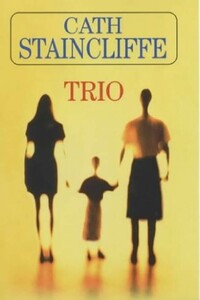
1960, Manchester. Three young Catholic women find themselves pregnant and unmarried. In these pre-Pill days, there is only one acceptable course of action: adoption. So Megan, Caroline and Joan meet up in St Ann's Home for Unmarried Mothers to await the births of their babies. Three little girls are born, and placed with their adoptive families. Trio follows the lives of these mothers and daughters over the ensuing years.
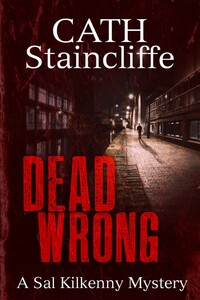
Single mother and private eye, Sal Kilkenny, has two very frightened clients on her hands. One, young mother Debbie Gosforth, is a victim; the other, Luke Wallace, is afraid he is a murderer. While Sal tries to protect Debbie from a stalker, she has to investigate the murder of Luke's best friend.

Your husband, your family, your freedom. What would you sacrifice for love? A love story, a modern nightmare and an honest and incisive portrayal of a woman who honours her husband's wish to die and finds herself in the dock for murder.When Deborah reluctantly helps her beloved husband Neil end his life and conceals the truth, she is charged with murder. As the trial unfolds and her daughter Sophie testifies against her, Deborah, still reeling with grief, fights to defend her actions. Twelve jurors hold her fate in their hands, if found guilty she will serve a life sentence.
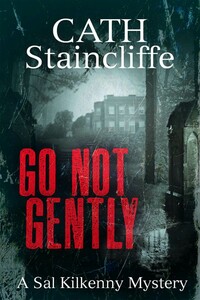
From the author of LOOKING FOR TROUBLE, a further crime novel featuring private investigator Sal Kilkenny. When a man is distraught at his wife's apparent infidelity, he enlists the help of Sal to confirm his suspicions, only to find himself a widower soon afterwards. From there Sal's other case also begins to take a disturbing and violent turn.
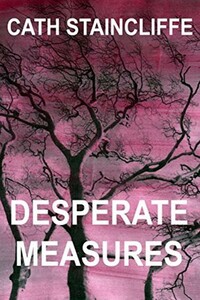
The fourth Blue Murder novel written by the creator of the hit ITV police drama starring Caroline Quentin as DCI Janine Lewis.A well-respected family GP is found shot dead outside his surgery; who could possibly want to kill him? As DCI Janine Lewis and her team investigate they uncover stories of loyalty, love, deception, betrayal and revenge.Praise for the Blue Murder books'Complex and satisfying in its handling of Lewis's agonised attempts to be both a good cop and a good mother.' The Sunday Times'Uncluttered and finely detailed prose.' Birmingham Post'Beautifully realised little snapshots of the different characters' lives… Compelling stuff.' Sherlock Magazine'A swift, satisfying read.' City Life'Precise and detailed delineation of contemporary family relationships.' Tangled Web'Lewis seems set to become another very popular string to Staincliffe's bow as one of the leading English murder writers.' Manchester Metro'Pace and plenty of human interest.' Publishing News'Blending the warmth of family life with the demands of a police investigation.'Manchester Evening News'Juggling work and family is a challenge of modern life and encountering realistically portrayed women with family responsibilities is a pleasure.
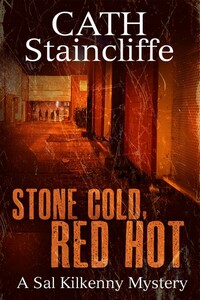
When private eye Sal Kilkenny is asked to discover the whereabouts of Jennifer Pickering, disinherited by her family twenty years ago, it seems that Jennifer does not want to be found. Despite her initial reservations, as the events of the past gradually unfold, single-mum Sal finds that she is becoming engrossed in the case. There are dark secrets waiting to be uncovered but can Sal break the conspiracy of silence that surrounds this mystery? As she spends her days tracing Jennifer, Sal's nights become shattered by an emotional and often dangerous assignment with the Neighbour Nuisance Unit on one of Manchester's toughest housing estates.

«Золотая пуля». Так называют в городе агентство, в котором работают журналисты-инвестигейторы (или, в переводе на русский — «расследователи»). Возглавляет это вымышленное агентство Андрей Обнорский — герой романов Андрея Константинова и снятого по этим романам телесериала «Бандитский Петербург». В «Золотой пуле»-3 вы встретитесь не только с Обнорским, но и с его соратниками-журналистами: Николаем Повзло, Зурабом Гвичия, Светланой Завгородней, Нонной Железняк, Георгием Зудинцевым и другими. Все они попадают порой в опасные, а порой и комичные ситуации.

Евгения Кручинина, сотрудница частного детективного агентства, оказалась свидетельницей убийства одного из своих клиентов, а спустя некоторое время случайно спасла другого. Как выяснилось, эти двое много лет назад играли в одном любительском спектакле. Самое странное, что почти все участники этого спектакля погибли... Что это? Цепь совпадений? А может быть, некий беспощадный убийца воспользовался случаем свести счеты со всеми своими врагами? Ранее роман издавался под названием "Смерть тебе не изменит".
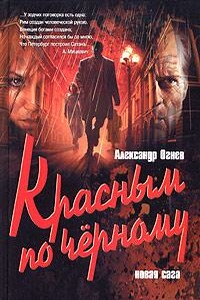
«Красным по чёрному» — первая часть «Невской САГИ», начало которой теряется в веке двадцатом, в предвоенном СССР и блокадном Ленинграде. Основные события книги, однако, разворачиваются в сегодняшнем Петербурге — городе мистически прекрасном и жестоком одновременно. Роковой вихрь, закруживший героев романа, не раз заставит и читателя перенестись из настоящего в прошлое, чтобы вновь вернуться в день нынешний — «с кругов собственных на круги чужие». И с кругов тех уже не сойти никому: ни девочке-школьнице, ни вору в законе, ни милицейскому генералу, ни ворожее.

В книге рассказывается история главного героя, который сталкивается с различными проблемами и препятствиями на протяжении всего своего путешествия. По пути он встречает множество второстепенных персонажей, которые играют важные роли в истории. Благодаря опыту главного героя книга исследует такие темы, как любовь, потеря, надежда и стойкость. По мере того, как главный герой преодолевает свои трудности, он усваивает ценные уроки жизни и растет как личность.
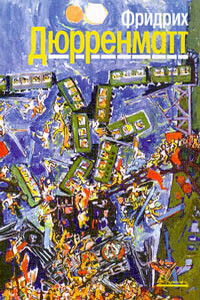
Дюрренматт не раз повторял, что он наследник европейского Просвещения. Но это был странный просветитель. Он хотел объяснить мир, но объяснить не до конца. Дух человеческий требует загадок неразрешимых, требует секретов и тайн.

В книге рассказывается история главного героя, который сталкивается с различными проблемами и препятствиями на протяжении всего своего путешествия. По пути он встречает множество второстепенных персонажей, которые играют важные роли в истории. Благодаря опыту главного героя книга исследует такие темы, как любовь, потеря, надежда и стойкость. По мере того, как главный герой преодолевает свои трудности, он усваивает ценные уроки жизни и растет как личность.